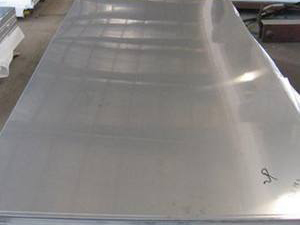
|
Details
Position:
Home>
Details
Aluminum lithium alloy 2198/2195
Aluminum Lithium Alloy New materials are an important foundation of aerospace technology, and the development of aerospace technology continues to raise new questions and requirements for materials science. Aluminum-lithium alloy is the fastest growing field of aviation metal materials in the past ten years.
Advantages of aluminum-lithium alloy Lithium is the lightest metal element in the world. When lithium is added as an alloying element to metal aluminum, an aluminum-lithium alloy is formed. After adding lithium, the specific gravity of the alloy can be reduced, and the rigidity can be increased, while still maintaining higher strength, better corrosion resistance and fatigue resistance, and suitable ductility. Because of these characteristics, this new alloy has received extensive attention from the aviation, aerospace, and marine industries. It is precisely because of the many advantages of this alloy that attract many scientists to study it, and the development of aluminum-lithium alloys has sprung up like bamboo shoots after a rain. The development history of aluminum-lithium alloy Aluminum-lithium alloy is mainly developed for weight reduction of aircraft and aerospace equipment, so it is also mainly used in the aerospace field. It is also used in ordnance and nuclear reactor materials, tank armor-piercing bombs, torpedoes and other weapon structural parts, in addition to automobiles and robots. And other fields are also fully used. Beginning in the 1930s, Germany, the United States, Britain, and the former Soviet Union developed Al-Li alloys, but the real commercial value was the 1.1% lithium-containing 2020 alloy developed by Alcoa of the United States in 1957, which was used to make the navy. The horizontal stabilizer of the wing skin and tail of the TA-5CVigitante aircraft. At present, the main aluminum-lithium alloys in use include 2××× series (Al-Li-Cu-Zr) and 8××× series (Al-Li-Cu-Mg-Zr) and more than 10 grades, and the largest ingot specification reaches Above 25t, its rolling, extrusion and forging processing technology has reached the level of conventional aluminum alloy. Aviation applications of aluminum-lithium alloys Al-Li alloy has been used or tried on military aircraft, civilian airliners and helicopters, mainly for fuselage frames, flaps and wings, vertical stabilizers, fairings, intake lip, hatch, fuel tanks, etc. Wait. , This alloy has better fatigue resistance and higher strength than ordinary aluminum alloy. Each A330/340 aircraft; As early as the 1950s, the United States developed the x2020 aluminum-lithium alloy and later used it to replace 7075 for RA-SC early warning aircraft. A US company uses C-155 aluminum-lithium alloy in the vertical and flat tails of Boeing 777 and Airbus A330/340 aircraft, using 650kg of Al-Li alloy, which can reduce the weight of the aircraft by 4250kg, increase the effective load and reduce fuel consumption. McDonnell Douglas C-17 transport aircraft uses aluminum-lithium alloy plates and extruded profiles to manufacture cargo compartment floor beams, flaps and aileron skins and other structures. The amount is up to 2.8t, which is 208kg lighter than ordinary aluminum alloys. The French Phantom A large number of aluminum-lithium alloys are also used in fighter jets, and their cost is lower than thermoset plastics and metal matrix composites. In 1988, Lockheed Martin Tactical Aircraft Systems, Lockheed Martin Aviation Systems, and Reynolds Metals began a joint plan for the development of AA2l97 alloy to produce heavy-duty thicknesses for military fighter plane partitions and bulkheads. plate. In June 1996, Reynolds Metals began to sell the first batch of AA2l97 alloy plates, which were used to replace other materials to manufacture the rear partitions (bulk walls) and other parts of the US Air Force F-16 aircraft. The front of the European experimental fighter EFA is made of 8090 thin plates, accounting for 9% of all materials, and a lot of Al-Li alloys are used in the cockpit. Among them, the electronic equipment room made of Al-Li process The cover is 1.5m long. A large number of A1-Li alloy plates and forgings are used on the frame, skin and internal structure of the large helicopter EH101 jointly produced by Britain and Italy, and the weight of each aircraft is reduced by 200kg. It is estimated that the economic benefit of the helicopter will increase by as much as 3000 pounds for every 1kg lightened during the entire service period. Aluminium-lithium alloy aerospace applications, for the structure of aerospace vehicles, the reduction of mass can increase the effective load, and every 1kg increase in the effective load can bring benefits of 4,400 to 110,000 US dollars. Therefore, due to the low density and good performance of Al-Li alloys, Al-Li alloy structures are used in many aerospace vehicles. Previous
|




